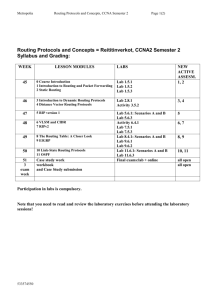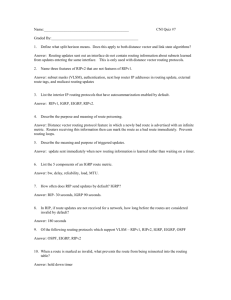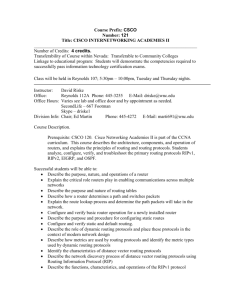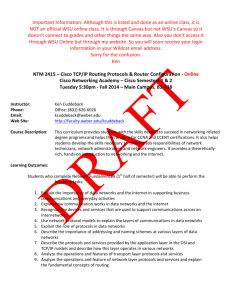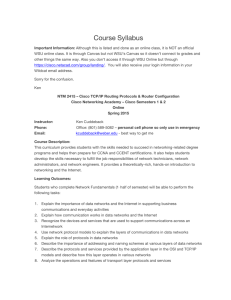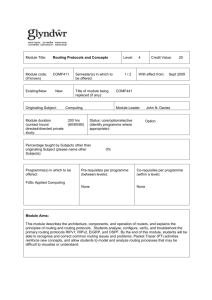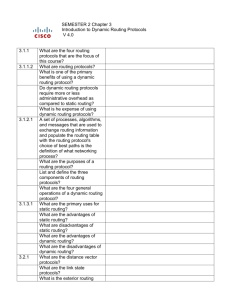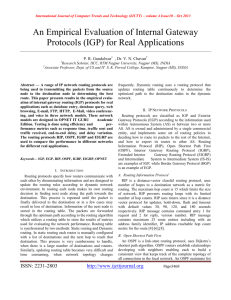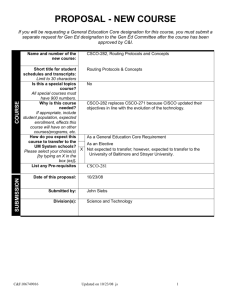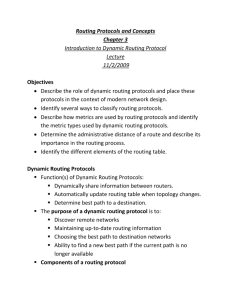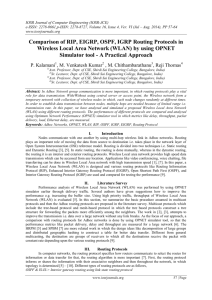Cisco™ CCNA : Routing Protocols
advertisement
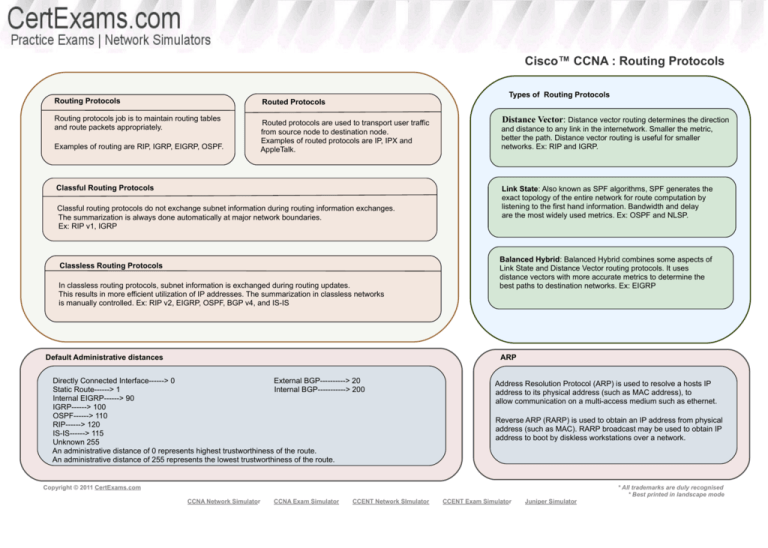
cvcccccCisco Cisco™ CCNA : Routing Protocols Routing Protocols Types of Routing Protocols Routed Protocols Routing protocols job is to maintain routing tables and route packets appropriately. Examples of routing are RIP, IGRP, EIGRP, OSPF. Routed protocols are used to transport user traffic from source node to destination node. Examples of routed protocols are IP, IPX and AppleTalk. Classful Routing Protocols Classful routing protocols do not exchange subnet information during routing information exchanges. The summarization is always done automatically at major network boundaries. Ex: RIP v1, IGRP Classless Routing Protocols In classless routing protocols, subnet information is exchanged during routing updates. This results in more efficient utilization of IP addresses. The summarization in classless networks is manually controlled. Ex: RIP v2, EIGRP, OSPF, BGP v4, and IS-IS Distance Vector: Distance vector routing determines the direction and distance to any link in the internetwork. Smaller the metric, better the path. Distance vector routing is useful for smaller networks. Ex: RIP and IGRP. Link State: Also known as SPF algorithms, SPF generates the exact topology of the entire network for route computation by listening to the first hand information. Bandwidth and delay are the most widely used metrics. Ex: OSPF and NLSP. Balanced Hybrid: Balanced Hybrid combines some aspects of Link State and Distance Vector routing protocols. It uses distance vectors with more accurate metrics to determine the best paths to destination networks. Ex: EIGRP ARP Default Administrative distances Directly Connected Interface------> 0 External BGP----------> 20 Static Route------> 1 Internal BGP-----------> 200 Internal EIGRP------> 90 IGRP------> 100 OSPF------> 110 RIP------> 120 IS-IS------> 115 Unknown 255 An administrative distance of 0 represents highest trustworthiness of the route. An administrative distance of 255 represents the lowest trustworthiness of the route. Address Resolution Protocol (ARP) is used to resolve a hosts IP address to its physical address (such as MAC address), to allow communication on a multi-access medium such as ethernet. Reverse ARP (RARP) is used to obtain an IP address from physical address (such as MAC). RARP broadcast may be used to obtain IP address to boot by diskless workstations over a network. Copyright © 2011 CertExams.com * All trademarks are duly recognised * Best printed in landscape mode CCNA Network Simulator CCNA Exam Simulator CCENT Network SImulator CCENT Exam Simulator Juniper Simulator
![Internetworking Technologies [Opens in New Window]](http://s3.studylib.net/store/data/007474950_1-04ba8ede092e0c026d6f82bb0c5b9cb6-300x300.png)
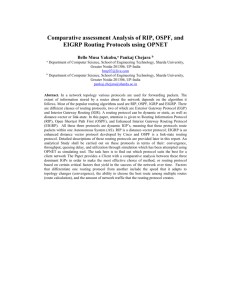

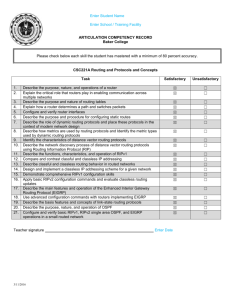
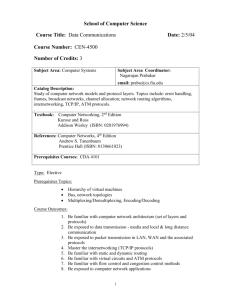
![Internetwork & TCP/IP [Opens in New Window]](http://s3.studylib.net/store/data/008490208_1-eaf10231908f97f1b47b18fe3c507663-300x300.png)

